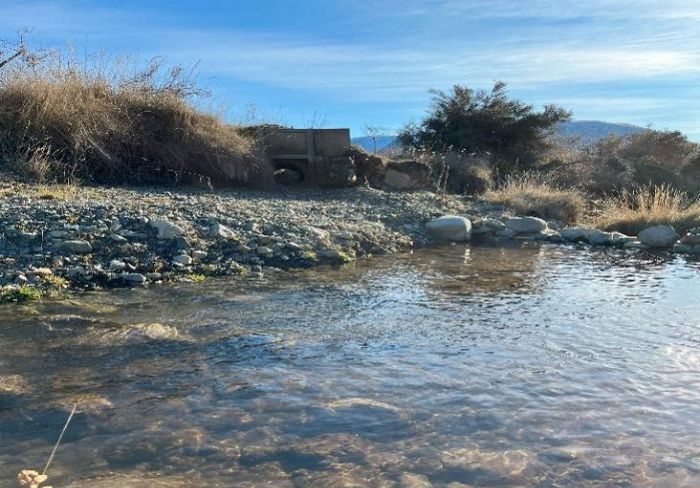Councillors believe there is too much risk and cost to apply for resource consent to reinstate a diversion for Lake Camp in Canterbury.
Lake Camp’s water level has dropped considerably, sparking a community campaign to restore its historic water source – a diversion of the Balmacaan Stream, which had a resource consent up until 2020.
Ashburton District councillors were presented with a report outlining requirements and potential costs of applying for a resource consent to divert water from Balmacaan Stream to Lake Camp.
It resulted in a decision not to proceed with any consent application in a close vote of six to four.
Councillor Russell Ellis was one of the councillors who said he couldn’t support the high-risk and expensive project.
The council could potentially spend around $1 million on a consent application that had no guarantee of being approved, he said. Even if it was lucky enough to get approved, it didn’t guarantee the ability to put water into the lake.
That’s because the consent would be subject to Canterbury Land and Water Regional Plan minimum flow regulations, which were not in place for the previously consented diversion.
“When we need the water, it’s never going to be there anyway,” Ellis said.
“So we spend $1m, get a consent, and then not be able to use it.”
Councillor Tony Todd said he had been in favour of pursuing the consent until the report highlighted many hurdles and associated costs.
“I can’t sit here and agree to a project or consent process that could take $900,000 with no guarantee of success.”
Councillor Richard Wilson said council shouldn’t take the lead due to the risky process and the possible million-dollar price tag falling on ratepayers.
He said the report laid out the pathway for someone else to seek the consent.
“Maybe this is the time for a community group outside of council to do it, and council could support them.”
Deputy Mayor Liz McMillan wanted to put off making any decision and instead go out for public consultation in the next annual plan, which had the support of Phill Hooper and Carolyn Cameron.
Those three, and councillor Lynette Lovett, voted against the option not to proceed.
WHAT WAS IN THE REPORT?
The cost estimates were about $500,000 to complete the application process.
That included hydrological, cultural, ecological, and engineering assessments, which would take a minimum six months.
Plus, there was a lizard survey and wildlife management plan and a high likelihood the application would require full public notification hearings. It could also be appealed.
If the consent was granted, the estimate to construct a new diversion structure with monitoring systems was $175,000, with annual compliance and monitoring costs of $25,000 for the 10 to 15-year duration, and the possibility of an additional $125,000 for fish screens.
VOTING BREAKDOWN
Councillors voted 6 to 4 to not proceed with consent process.
THE YES VOTES
Richard Wilson: Felt the council shouldn’t pursue a risky process.
Tony Todd: “Probably 49 hurdles to a consent, which has no guarantee it will be successful.”
Russell Ellis: “A very high-risk thing, expensive.’’
Mayor Neil Brown: “The rules have changed.”
Leen Braam: Focused his questions on the notification process and allocation limits in the Ashburton catchment.
Rob Mackle: Offered no comments.
THE NO VOTES:
Liz McMillan: Wanted to pause the process. “It needs to come back for public consultation”.
Lynette Lovett: The council had a moral obligation to the public. “We need to move forward with other organisations.’’
Phill Hooper: “I would like to hear from our community and would like it to go to the annual plan.”
Carolyn Cameron: Wants to delay a decision to allow for public consultation.
By Jonathan Leask





